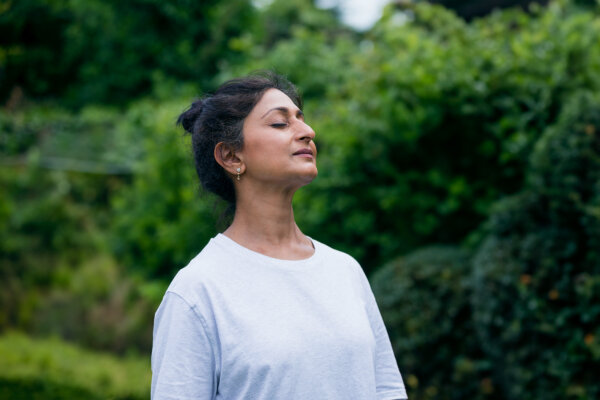
Women transitioning into menopause may experience increased breathlessness and sleep apnea due to the decrease in hormone production, specifically estrogen and progesterone, during this phase. These hormones play a crucial role in lung function and breathing.
These breathing conditions can also lead to anxiety, exacerbate vasomotor symptoms like heart palpitations and hot flashes, and potentially cause hormone imbalances. However, these symptoms don’t have to be a typical part of menopause.
While breathing exercises have not been extensively researched, they have shown promise in improving sleep, lung function, anxiety, and vasomotor symptoms.
Dr. Louise Oliver, a general practitioner, is passionate about this topic and has become certified as a functional breathing practitioner to assist her patients in navigating menopause more effectively.
Disordered breathing can significantly impact women’s daily functioning, especially during menopause. Learning to breathe better can help manage uncomfortable menopausal symptoms as an alternative or supplement to hormone replacement therapy (HRT).
Lung Function Decline
A long-term study of European women found a rapid decline in lung function during menopausal transitions, surpassing the expected age-related decline. This decline was likened to smoking a pack of cigarettes daily for several years.
Published in the American Journal of Respiratory and Critical Care Medicine, the study linked the decline in lung function to hormonal changes during menopause, particularly low estrogen levels associated with inflammation.
Sleep Apnea Risk
Postmenopausal women are at a higher risk of sleep apnea due to hormonal changes. However, the exact reasons for this association are still unclear.
While hormones like estrogen and progesterone are believed to protect breathing, menopausal women may still experience sleep-disordered breathing independent of age and weight. The impact of hormone replacement therapy on this risk remains uncertain.
It’s crucial for women experiencing symptoms like snoring, poor sleep, or daytime sleepiness to seek evaluation, as sleep-disordered breathing can have serious consequences.
Improving Breathing Habits
Most factors contributing to disordered breathing are modifiable, and conscious effort can improve unconscious breathing habits over time. Breathing exercises and techniques can play a significant role in reversing sleep apnea and enhancing overall respiratory health.
Breathing is most effective when it is light, low, and slow, as this engages the diaphragm, the primary muscle involved in respiration that is often underutilized. Teaching people to be more tolerant of carbon dioxide can help them breathe slower, naturally engaging the diaphragm.
Slow and gentle nasal breathing also helps strengthen the vagus nerve, which controls the parasympathetic relaxation response and plays a role in maintaining heart rate and blood pressure. This type of breathing can also have a positive impact on hot flashes and night sweats, as decreased vagal tone has been associated with these symptoms in medical studies.
Research on breathing techniques for menopause has focused on paced respiration, with a target rate of six breaths per minute. Practicing this technique twice daily has been shown to reduce hot flashes by 52%, with even once-a-day practice offering benefits.
Paced breathing is accessible to everyone and can be done at home. It is a free and effective way to manage hot flashes and other menopausal symptoms. Pausing to practice the breathing technique during a hot flash can help alleviate symptoms in the moment.
In addition to paced breathing, lifestyle interventions like music therapy can also be effective in managing menopausal symptoms. Breathing experts emphasize the importance of proper breathing techniques for overall health, stress management, and improved sleep.
Overall, incorporating lifestyle interventions like paced breathing can be beneficial for managing menopausal symptoms and improving overall well-being. It is important to find strategies that work best for each individual, as there is no one-size-fits-all approach to health and wellness.
Source link





